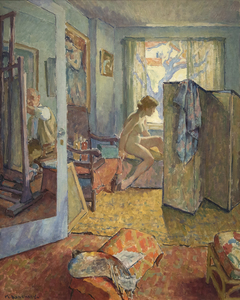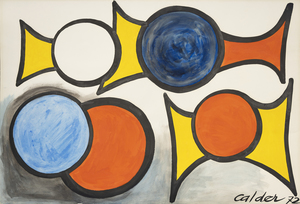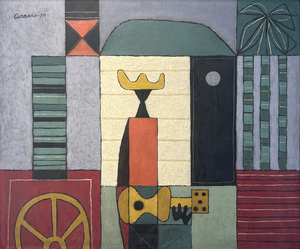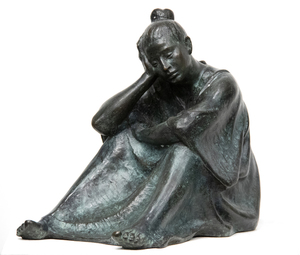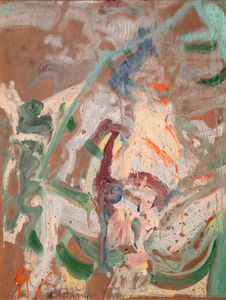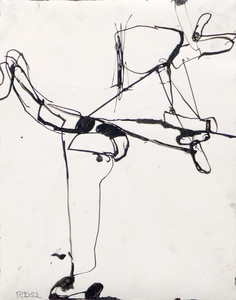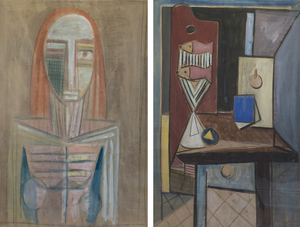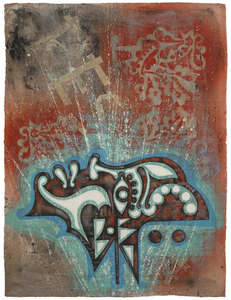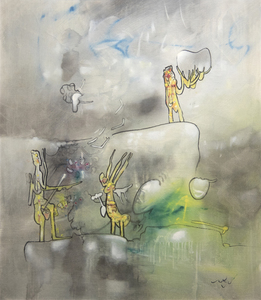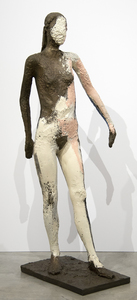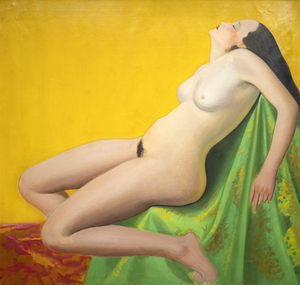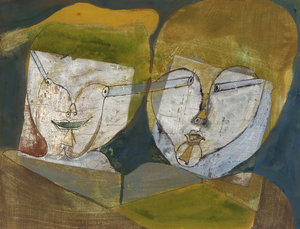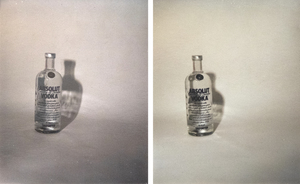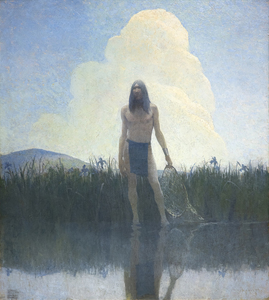Figurative Masters of the Americas
Think of avant-garde art of the last 100 years and what do you imagine? Do you think of think of conceptual art like Anish Kapoor? Or do you think of pure abstraction like Hans Hofmann? Much of enveloping-pushing art of the 20th and 21st centuries have been associated with non-representational art, but the trends within art history have swung between abstraction and figuration as artists pushed what art could be and asked deeper cultural and social questions. Some of the most important artists like Andy Warhol and Willem de Kooning are famed for their contribution to art history and culture via their figurative works.
In a collaboration between the Ann Norton Sculpture Garden and Heather James Fine Art, Figurative Masters of the Americas re-examines the importance of figuration in the history of art, focused on artists throughout the Americas. Split into four sections, each gallery dives deeper into different historical and geographical aspects of figuration: Latin America, early 20th century, mid-20th century, and Pop Art.
LATIN AMERICAN
The first gallery represents some of the largest names of Latin American art including Diego Rivera, Rufino Tamayo, and Wifredo Lam. These artists, like many in Latin America, looked beyond representation to create art that spoke to their cultural identity and politics. As Rivera notes, “The secret of my best work is that it is Mexican.” Rivera, Tamayo, and Lam synthesized the modernism emerging in the early to mid-20th century with pre-Colombian culture and art style. For Rivera and Tamayo they turned Mexican folk art while Lam incorporated Afro-Cuban mysticism.
Other artists in this section include Roberto Matta, Francisco Toledo, Felipe Castañeda, Carlos Luna and Mario Carreño. It is important to note that while all of these artists were pushing the boundaries of representational art, running concurrently were the Neo-Concrete artists like Hélio Oiticica who, like their figurative counterparts, expressed political views through their art but through abstraction. This push and pull between figuration and abstraction will be seen throughout each gallery.
EARLY 20TH CENTURY
At the beginning of the 1900s, as the United States emerged from its Gilded Age, the nation grappled with what kind of country it was and would be. In the art of N.C. Wyeth or Thomas Hart Benton, we see a formation of a kind of identity that the United States would buy into. Is the country rural or urban? How do we tackle our relationship with Native Americans? What does it mean to be American?
We can see in an artist like Maurice Askenazy the role of immigration to the U.S. Born in Russia, the artist helped promote American and California Impressionism, two key movements that bridged the art of the nation from the late 19th century into the modernism that would explode in the 20th century.
Even artists that would become known for their pure abstraction would begin with figuration. Morris Louis grappled with figuration finding inspiration in German Expressionists and important the Mexican muralist David Alfaro Siqueiros. Art never exists in a vacuum and depends on conversations between artists and between cultures.
For more about N.C. Wyeth, please visit our exhibitions Meeting Life: N.C. Wyeth and the MetLife Murals, A Beautiful Time: American Art in the Gilded Age and Your Heart’s Blood: Intersections of Art and Literature.
MID-20TH CENTURY
Mid-century American Art is often defined by Abstract Expressionism but to think of the AbEx movement as pure abstraction is to erase the importance of figuration. Included in the exhibition is a painting from Willem de Kooning’s famed Women series. Figuration has always played an important part in his process and with this series, de Kooning was able to fuse the tenets and techniques of Abstraction Expressionism with the psychological and aesthetic qualities of figuration.
Even artists almost exclusively associated with pure abstraction, like Alexander Calder, figuration was never truly abandoned. Please enjoy our other exhibition, Alexander Calder: A Universe of Painting, to learn more.
However, as Abstract Expressionism became the dominant trend, artists began to question its premise and turned to figuration to understand and expand the possibilities of paint and painting. One important locus was the Bay Area Figurative art movement and counted among its members were Paul Wonner and Manuel Neri. Even by its location of San Francisco and the surrounding Bay Area challenged the dominance of New York and Abstraction, setting aside that San Francisco had its own unique school of abstraction. For more about this movement, please visit our exhibition, Moment to Moment: Figuration and the Northern California Avant-Garde.

Photograph of Paul Wonner Painting
POP ART
The exhibition closes out with the provocation and seduction of Pop Art. Like Abstract Expressionism and the Bay Area Figurative art movement, Pop Art exploded in the wake of WWII. In contrast to the angst of abstraction or the retreat to figuration, Pop Art celebrated, appropriated, and critiqued the consumerism of the Post-War years. Despite the brightness and allure of the art, the movement offered deeper insight into the American psyche – everything is surface and substance.
Hidden beneath the glamour of Warhol’s art distilled American society into its consumption and its desires and the interplay between image and illusion.
With George Segal, there is the trauma WWII and the Holocaust. His figures stand as monuments to ordinary people, evoking the emotions of everyday life. Healing from unspeakable trauma starts with the human body. His work would go on to influence other sculptors and installation artists.
Emerging in the decade of greed and opulence, the art of Keith Haring instead speaks to accessibility and access to art for everyone. His street art rebelled against the status quo.
Other artists in this section include James Rosenquist, Roy Lichtenstein, Tom Wesselmann, and Mel Ramos.

Andy Warhol, "Keith Haring", 1984, silver gelatin print, 10 x 8 in.
Dive deeper into Pop Art with our exhibition, Everyone Needs a Fantasy: Pop Art in America and Andy Warhol Polaroids: Wicked Wonders.






